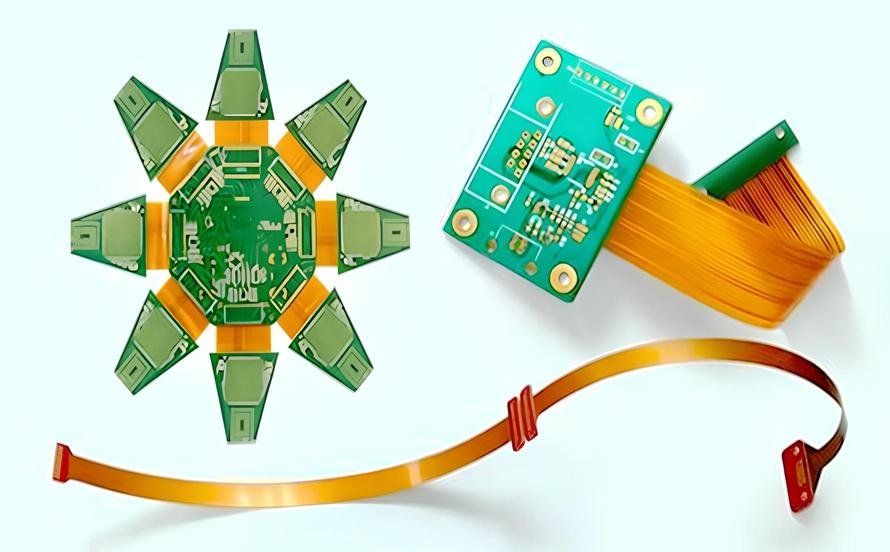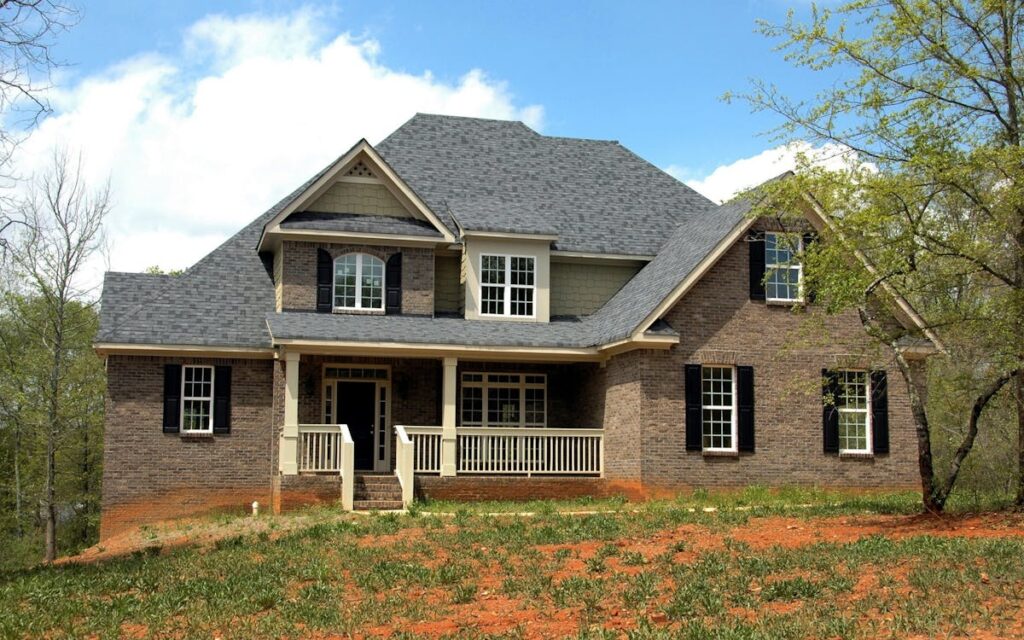The world around us is developing very quickly, and electronic industries have become more demanding to reduce their size and increase their effectiveness. The rigid-flex PCB played a major role in creating different styles and shapes of PCBs, in line with what is modern and advanced.
Rigid flex PCB boards are a popular combination of rigid and flexible, offering stability, strength, rigidity, flexibility, and ease of shaping. They are popular in manufacturing modern electronic devices, from complex to luxurious, and are found in various fields, including medical, military, space, and portable devices. In this article, let’s walk through the rigid flex PCB design.
What is the Rigid-Flex PCB Structure?
From its name, it consists of combining rigid and flexible materials, by stacking several rigid and flexible layers with each other. The number of these layers and their arrangement in the stacking process vary based on the requirements of the rigid flex circuit design.
Typically, a rigid-flex structure consists of the following:
- A rigid layer forms the foundation structure of the board and upon which the board elements are placed. It usually consists of the most common FR-4 material, polyamide, and ceramics.
- Flexible layers: These layers are sandwiched between the rigid layers. They provide interconnections between the layers and also make the board bendable smoothly. Therefore, they are made of materials that provide them with flexibility, such as polyamide polyester, which is the most common.
- To integrate rigid and flexible layers into the rigid-flex PCB board, an adhesive layer is used to complete the integration process correctly and soundly. Epoxy and acrylic materials are generally used.
- The protective layer that protects flexible parts from damage.
Basic Rigid Flex PCB Design Guidelines
Certainly, you have in mind how to design these boards with wide and multiple uses. Many steps and processes take place in the stages of rigid-flex circuit design. Here are the rigid flex design guidelines.
- Determine Design Requirements, design requirements are crucial for developing a successful design, encompassing factors such as operating environment, performance standards, and space boundaries.
- Determine the Materials, by knowing the basic requirements for the design, the appropriate materials are chosen for both the rigid and flexible parts.
- Layout Design involves three steps: an initial design for rigid and flexible parts, a blueprint for electrical connections, and a schematic design using PCB design software. The initial design involves identifying components and electronic elements, creating a blueprint for panel components, and ensuring proper steering and placement of board elements in line with design rules.
- Board Circuit Design, at this stage of rigid flex circuit design, both rigid and flexible circuits are designed separately to ensure each part works properly and reliably before the integration process.
- Determining the Number of Layers of the Stackup, The rigid-flex PCB stackup design requires determining the number of rigid and flexible layers, with more complex designs requiring more layers.
- Transitional Zones, those places where the shift from rigid to flexible and the opposite from flexible to rigid, are a very important area to provide smooth connections between the two regions and ensure easy mechanical movement of both sides. So, the rigid flex PCB design phase has to be very important and accurate.
- Following General Rigid Flex PCB Design Guidelines, the rigid flex design must be based on the design rules and all guidelines agree to build a design without any errors that may eventually lead to a complete redesign and therefore a loss of time and money.
- Post-completion of the Board Design, several rigid flex design phases include: First, a comprehensive analysis of each of the signals transmitted through the layers and their clarity and integrity. Secondly, measure the thermal management of the rigid-flex PCB board to ensure that it is not damaged if there are parts where temperatures increase. Thirdly, experience flexible areas and classes where rigid steel and flexibility meet to make sure the mechanical performance is efficient.
- After Completing, tests for the initial design and ensuring that the design complies with all rigid PCB design guidelines and is free from any defects or weaknesses ensuring quality and efficient performance. If there is no alteration or addition of a design that is equipped for the manufacturing and production process.
Some Considerations on Rigid Flex Circuit Design
The considerations present in your mind when the design process begins are as follows.
- When you choose materials, they must have high characteristics such as thermal stability properties, electrical and mechanical resistance, etc., in line with rigid flex design requirements to ensure its reliability and durability.
- Consider the arrangement of stack layers when stacking both flexible layers and rigid, it is a process that is based on rigid-flex circuit design requirements. The design may require more flexible layers or vice versa. So, you have to have prior knowledge of the preference of arranging rigid and flexible layers to ensure the safety of thermal dissipation between layers and signal transmission.
- Flexible layer is the most curved part in several directions so when designing it is necessary to determine the bend radius so that the bending is not exaggerated or the bending board cannot be bent with a sound image and in turn breaks the board.
The rigid flex design process is a very important and accurate stage, so every step of it must be carefully considered. It is a process in which the initial board is built. If anything goes wrong with it, it could spoil the entire process of the product. So, you have to be aware of the rigid-flex circuit design and materials suitable for rigid-flex PCB, it is rather complex. If you are not experienced in designing PCB panels, companies with long experience and the best equipment are your good choices!






